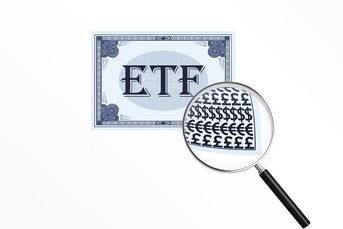Why investors should look at domestic ETFs
During April 2012, assets in ETFs continued to increase, though the pace slowed down from the year’s strong…
During April 2012, assets in ETFs continued to increase, though the pace slowed down from the year’s strong start. While BlackRock remains the largest provider based on assets, followed by SSGA, the third biggest player, Vanguard, experienced the most inflows in April and year-to-date. S&P Capital IQ thinks Vanguard has a number of low-cost investment strategies tied to the themes that have appealed to investors, including emerging market and U.S. dividend-paying stocks. Indeed, emerging market ETFs recorded inflows of more than $11 billion in the first four months of 2012, in contrast to $2.4 billion of outflows in 2011, according to data from iShares.
Vanguard MSCI Emerging Markets ETF (VWO 38 Marketweight) was the biggest asset gatherer this year, adding over $7 billion, while peer iShares MSCI Emerging Market Index Fund (EEM 38 Marketweight) garnered the fifth most assets. While these diversified funds have long histories, a number of new offerings kicked off in 2012 that slice the emerging market pie into narrower segments, including SPDR S&P Small Cap Dividend Emerging Markets (GMFS 42 Marketweight) and iShares MSCI Emerging Markets Dividend Index (DVYE 49 Underweight). S&P Capital IQ ranks both of these ETFs, despite their recent launch in January and February 2012, respectively, as our approach to ETFs involves an analysis of the holdings from a valuation and risk standpoint and not past performance.
Though investors have flocked to some of these riskier international equity ETF offerings, we note that many of the better performing ETFs as of May 20 were focused on U.S equities. Indeed, iShares Dow Jones US Regional Banks Index Fund (IAT 23 Overweight) and Technology Select Sector SPDR Fund (XLK 28 Overweight) were up 10% and 8.2%, respectively. S&P Capital IQ ranks them both favorably, but not because of their strong run this year. Since equity ETFs are essentially baskets of stocks, S&P Capital IQ’s ETF approach is holdings-based, combined with an assessment of a variety of cost factors. So let’s look inside and see what these two ETFs hold.
Overall, S&P Capital IQ equity analysts believe that many of the largest holdings are undervalued and that the risk characteristics of the portfolio, as assessed using the Standard & Poor’s Rating, are favorable; S&P Capital IQ operates independently from Standard & Poor’s Ratings.
Despite its name, XLK is not just a play on the information technology sector, as it has a 13% stake in telecom services companies such as AT&T (T 33 Buy). However, it has a high concentration in blue-chip tech companies, with Apple (AAPL 538 Buy), IBM (IBM 197 Buy) and Microsoft (MSFT 30 Buy), three stocks that S&P Capital IQ’s equity analysts favor, comprising 35% of assets. In addition, many companies held within the ETF, which has an expense ratio of just 0.18%, have strong investment-grade credit ratings.
Meanwhile, the broader financial sector experienced pressure in April due in part to concerns about trading activities and exposure to European sovereign matters. However, IAT is focused on regional banks and diversified banks, two sub-industries that S&P Capital IQ’s equity research team views favorably from a fundamental standpoint, due to improving credit quality and no direct exposure to the Eurozone. Indeed, S&P Capital IQ recommends purchase of many of IAT’s largest holdings. These stocks include U.S. Bancorp (USB 31 Buy), PNC Financial Services Group (PNC 62 Buy) and Fifth Third Bancorp (FITB 13 Buy). While the ETF’s expense ratio of 0.47% is higher than some of the more diversified financial services portfolios, IAT’s beta of 1.2 is lower, signifying it has historically incurred less risk.
These are just two ETFs that earn a top Overweight ranking from S&P Capital IQ. To learn more about these ETFs and others that we view favorably, visit the ETF tab of MarketScope Advisor at www.getmarketscope.com.
Todd Rosenbluth is an analyst at S&P Capital IQ ETF
Learn more about reprints and licensing for this article.






